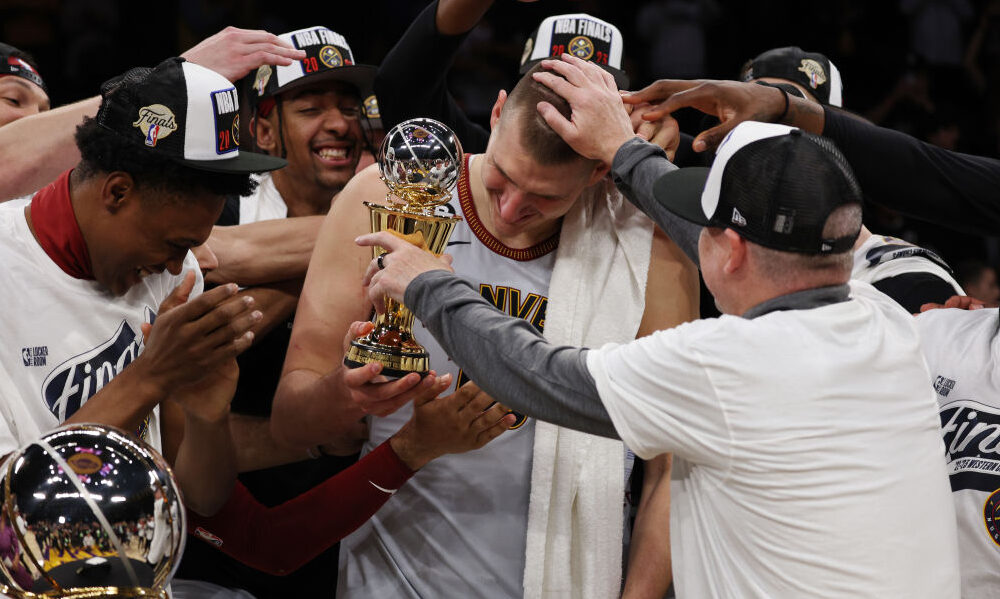What does it mean for CU if USC and UCLA bolt for Big Ten?
Jun 30, 2022, 1:04 PM | Updated: 1:34 pm
Any sense of security that the Colorado Buffaloes’ athletic department had about its place in the college-sports universe might be evaporating.
Thursday, Jon Wilner of the San Jose Mercury News reported that USC and UCLA are poised to leave the PAC-12 for the Big Ten as soon as 2024. Ross Dellinger of Sports Illustrated confirmed the report, noting that the two Los Angeles schools are “in negotiations” to jump to the Midwest-based conference.
In the chess game of conference shuffling, the Big Ten making a play for those schools is not a surprise. Last summer, the Southeastern Conference plucked Texas and Oklahoma from the Big 12, increasing its membership to 16. UCLA and USC would take the Big Ten to that same tally.
But every indication is that this shuffling is not over, and it could lead to a Big Two of the SEC and Big Ten replacing the current Power 5.
Where would that leave CU?
Possibly up a creek. Maybe back in some form of reorganized Big 12, which includes former conference rivals Texas Tech, Baylor, Oklahoma State, Kansas, Kansas State and Iowa State. Or perhaps in a merged Big 12/PAC-12 leftover hybrid.
But there is a case for the Buffs to eventually be in the Big Ten. It’s probably a long shot. But the worst CU can do is call and inquire.
First things first: If the Big Ten’s eventual play is to become a 20- or 24-school leviathan, it isn’t done looking west.
Stanford and Cal seem to be obvious choices from the standpoint of market size and academic prowess. The San Francisco Bay Area is the No. 6 market; the Big Ten would effectively have prominent presence in five of the top 6 Nielsen TV markets: New York City (Rutgers), Los Angeles (USC and UCLA), Chicago (Northwestern and Illinois), Philadelphia (Penn State) and the Bay Area. And it is unlikely Stanford would go without Cal, or vice versa.
The Big Ten’s eventual goal could be 24 schools in a college-sports landscape dominated by two conferences. It would look far different than anything we’ve known. In this alignment, the Big Ten could partition into four divisions. One could be western-based. USC, UCLA, Stanford and Cal seem to be logical choices. The Big Ten could then look northwest — to Washington and Oregon — to fill out its Pacific flank.
Being in the No. 12 market of Seattle, Washington seems to fit the Big Ten’s template of targeting big markets. But Arizona State (Phoenix, market No. 11) and CU (Denver/Boulder, market No. 16) offer more market power than Oregon, whose largest market is Portland (No. 21).
CU does not operate from a position of current football prowess. That is the weak point. Oregon and Washington are far stronger programs. They can point to appearances in the College Football Playoff. CU can’t point to anything beyond the Alamo Bowl in the last 20 years.
Yet in terms of academics and market size, CU could fit. Denver isn’t New York City, but Rutgers offered little in athletic prowess when the Big Ten extended its invitation to the Scarlet Knights. And while Nebraska’s football history towers over CU’s, there are over 500,000 more people in Denver, Adams, Arapahoe and Jefferson counties alone than there are in the entire state of Nebraska. As a state, Colorado has almost three times the population of its northeast neighbor. And CU is a member of the prestigious Association of American Universities; Nebraska is not. (USC and UCLA are. And until Nebraska, AAU membership was unofficially considered a prerequisite for Big Ten inclusion.)
But what happens on the East Coast has an impact, too. By adding Maryland in 2014, the Big Ten could target the Atlantic Coast Conference again. Rumors have long persisted of Big Ten interest in ACC schools such as North Carolina, Virginia, Duke and Georgia Tech. While North Carolina doesn’t have a top-20 market, it has three home markets in the top 35, two of which are in the top 24. Effectively, Raleigh-Durham and Charlotte combined would be the No. 10 market. Even Miami could be on the Big Ten radar; Miami-Fort Lauderdale is another top-20 TV market.
The only thing keeping the ACC together is a grant of rights signed by its schools. By terms of the grant, if a current ACC school leaves, it must forfeit its television money from its new conference to the ACC. The ACC’s grant of rights expires in 2036; the Pac-12’s current grant expires in 2024.
This would seem to help CU and other PAC-12 schools; on paper, it is easier for the Big Ten to nab, say, the Buffs than the Tar Heels or Blue Devils.
But if the ACC endures an exodus of multiple teams to the Big Ten and SEC, ESPN has the right to renegotiate its contract with the conference. Rumblings have long existed Given ESPN’s current contracts with the SEC and Big Ten — and its apparent desire to extend its current deal for half of the Big Ten rights — the ACC would not be in an advantageous position.
In short, if enough schools leave the ACC in one fell swoop, the grant of rights could be powerless. That would neutralize an advantage held by CU and other PAC-12 schools on the fence. The national scope and market power of the four ACC schools would likely trump what CU could offer.
Regardless, CU must be proactive. Don’t wait to pick up the phone.
Despite its recent football woes, CU has plenty to offer a super-sized Big Ten: a top-16 TV market, unquestioned status as the No. 1 school in a growing state, academic prowess.
The status of Buffs athletics as a big-time program rides on what happens as the conference-shuffling dominoes fall.
But one thing is clear: For CU and the PAC-12 to stand pat without its Los Angeles schools is a death sentence to their viability as any kind of national entity.






